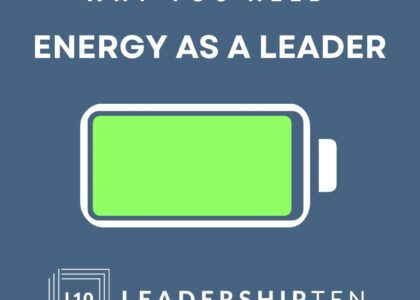Wouldn’t it be great if we could go to a “big box store” and shop for talented people to add to our organizations?
Here’s one even better, how about shopping for new leaders in the biggest online store in the world? All we would have to do is read the previous users’ reviews to know if this was our kind of leader or not. Humm, maybe someone needs to open this type of store.
Since we’re playing “Let’s pretend,” if you could shop for your next great hire, what would you look for?
Demographics
Values
Behavioral Style
Motivators
Emotional Intelligence
I.Q.
Education
Knowledge
Skills
Experience
Strengths
Anything else would you add to this list?
I have one more I would add. I would want my new leader to be a thinker.
If an organization, team, or project is running on the thinking of just one person, it will never be as good as it could be if 2, 5 or even 10 thinkers had a chance to give input. Yes, it’s easier just to tell people what to do. And yes, a group of thinkers can sometimes be like herding cats. But, if having a better outcome, taking your organization to the next level, and having a strong succession plan for every executive role is your goal, then it’s worth it.
Here’s an example of this type of leader as shared in a classic Harvard Business Review article:
I have spent the past 15 years, first as a management consultant and now as the dean of a business school, studying leaders with exemplary records. Over the past six years, I have interviewed more than 50 such leaders, some for as long as eight hours, and found that most of them share a somewhat unusual trait: They have the predisposition and the capacity to hold in their heads two opposing ideas at once. And then, without panicking or simply settling for one alternative or the other, they’re able to creatively resolve the tension between those two ideas by generating a new one that contains elements of the others but is superior to both. This process of consideration and synthesis can be termed integrative thinking. It is this discipline—not superior strategy or faultless execution—that is a defining characteristic of most exceptional businesses and the people who run them. –Roger L. Martin
https://hbr.org/2007/06/how-successful-leaders-think
Do we all have this gift? Probably not. Hence the reason, we need a diverse team who can offer opposing viewpoints so that the discipline of “integrative thinking” is present in our organizations and the synergy of multiple ideas creates something exponentially greater than one single idea.
What’s the biggest killer of integrative thinking?
From my 30+ years of working with leaders—ego and everything that goes with it stifles critical thinking. It’s difficult for those who have positional leadership to work with their team as a resource, not an expert. They worked their whole careers to become the expert. It’s a sacrifice to let go of that daily instant gratification. Letting the better idea win takes a spirit of humility. Here at LEADERSHIPTEN, we see this as the foundation of all effective communication. It’s the center of our L10 Communications Model.
What percentage of your team are integrative thinkers and what percentage are go with the flow-follow the crowd thinkers?
For more information on how to identify integrative thinkers in your organization and prospective team members, check out Mark Noon’s article here.
Would you like to talk more about changing up that ratio? Contact us using the form below:





